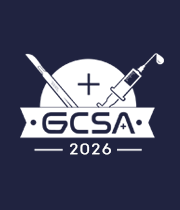Title : Anaesthetic management of a patient with myofibrillar myopathy undergoing elective carotid endarterectomy: Risks and strategies
Abstract:
We present the anaesthetic management of a 60-year-old gentleman with myofibrillar myopathy undergoing elective left carotid endarterectomy (CEA) following a recent ischaemic event. Myofibrillar myopathies are a heterogeneous group of neuromuscular disorders caused by various genetic mutations leading to progressive skeletal muscle weakness, potential respiratory compromise, and cardiac involvement. These disorders carry significant anaesthetic risk, particularly in the context of major vascular surgery, due to increased susceptibility to perioperative respiratory failure, cardiac arrhythmias, malignant hyperthermia-like reactions, and exaggerated responses to neuromuscular blocking agents.
The patient presented with acute-onset right arm weakness and expressive dysphasia. His MRI brain demonstrated multifocal acute infarcts in the left frontal lobe, and carotid duplex ultrasound revealed 50–69% stenosis of the left internal carotid artery. He was scheduled for an elective left CEA. His past medical history was significant for myofibrillar myopathy with a documented exacerbation following statin therapy. Pulmonary function tests (2023) demonstrated a mild restrictive pattern (FEV? 73%, FVC 77%), and his echocardiogram showed normal chamber sizes, preserved left ventricular function (LVEF ≥ 55%), intact interatrial septum, and no evidence of cardiomyopathy or valvular pathology. He reported longstanding dysphagia and adhered to safe swallowing strategies (soft, moist foods) to reduce aspiration risk. Medications included low-dose aspirin, ezetimibe, and pantoprazole.
Neuromuscular disorders present unique hazards for anaesthesia. Patients may have heightened sensitivity to both depolarising and non-depolarising muscle relaxants, prolonged recovery from neuromuscular blockade, and increased risk of postoperative respiratory insufficiency. There is also a recognised risk of anaesthesia-induced rhabdomyolysis and malignant hyperthermia-like reactions, particularly when exposed to volatile anaesthetic agents or depolarising neuromuscular blockers such as suxamethonium.
In this case, the anaesthetic plan was tailored to mitigate these risks. Volatile anaesthetics and suxamethonium were removed from the operating theatre to avoid inadvertent exposure. General anaesthesia was induced and maintained using an Eleveld model total intravenous anaesthesia (TIVA) technique with propofol and remifentanil, providing stable depth control and reducing the risk of triggering myopathy-related complications. Rocuronium (1.2 mg/kg) was selected for muscle relaxation due to its predictable pharmacokinetics and availability of rapid reversal agents. Video laryngoscopy facilitated atraumatic intubation.
Intraoperative monitoring included invasive arterial blood pressure and bispectral index (BIS). A phenylephrine infusion was titrated to maintain systolic blood pressure within 20% of baseline to ensure adequate cerebral perfusion during carotid cross-clamping. The patient remained haemodynamically stable with no arrhythmias or desaturation episodes. Neuromuscular monitoring guided the timing of reversal, ensuring full spontaneous recovery before extubation.
Postoperative care focused on airway protection, aspiration prevention, and early detection of respiratory compromise. Multimodal, opioid-sparing analgesia minimised respiratory depression risk. The patient was monitored in a high-dependency unit for 24 hours and recovered without complication.
This case underscores the critical importance of detailed preoperative assessment, multidisciplinary planning, avoidance of triggering agents, judicious use of neuromuscular blockade, and meticulous haemodynamic and respiratory management in patients with neuromuscular disease. Even in the absence of overt cardiopulmonary compromise, myofibrillar myopathy confers substantial anaesthetic risk, and careful individualisation of management is essential to optimise outcomes.



